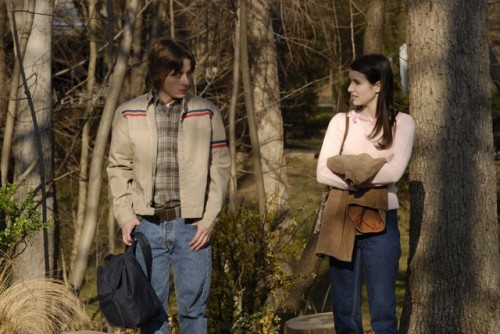Lymelife
One Culkin Short of a Bunch

Starring: Rory Culkin, Alec Baldwin
By Tom Bevis
Star Wars. Disco. The suburban illusion. All trademarks of growing up in the 1970’s. Lymelife, a semi-biographical film from director / writer Derick Martini is an in-depth observation and recollection of coming of age in America during a time when the country was quickly losing its innocence. The film serves as a portrait of two American families trudging through life in a struggling suburbia.
With the exception of a few bad apples (the worst of which is possibly Cynthia Nixon, who’s still acting for the small screen) the performances are immaculate. The fathers of the two families, played by Alec Baldwin and Timothy Hutton, build an incredible tension against one another, despite the fact that they are rarely on the screen at the same time. The same tension is carried through the children of these two families, creating the main arc of the film: the perils of a budding romance. Scott Bartlett and Adrianna Bragg (played by Rory Culkin and Emma Roberts, respectively) begin the turbulent hit-and-run routine of juvenile flirtation as their families each deteriorate and collide against one another.
Considering the great cast and subsequent magnificent performances, the highlight of the film is easily the dynamic between Rory Culkin and his older brother Kieran, who plays Scott’s older brother Jimmy. The two play off one another naturally, rolling with their lines, keeping the atmosphere between them limber in a way that only real brothers can do. Never does it seem like they’re competing or rallying for individual screen time, every movement and every line is planned perfectly and executed in sync with one another.
However, despite this, the cast isn’t the only reason the performances turned out so well. Lymelife has what may be one of the best scripts I’ve seen in the last year. The story never drags, never slows down, the pace is constant. The dialog is able to be witty one moment and staggering another. The script is an example of pure talent and comprehension of the form.
The film takes a rather refreshing approach to nostalgic era pieces by presenting merely an observation and sparing the audience the analysis. Martini builds the story around two families that serve simply as two families, not as metaphors, symbols or any of the stretched and over-used gimmicks that are often referred to as ‘poetic.’ Any analysis or symbolism found within the film can be credited solely to the audience and how they perceive the film, either as fact or exaggeration.
The film’s chief flaw is easily its ready and strong similarity to American Beauty. Both films are centered between two families, deal with the tribulations of young love, and are bound irreversibly by infidelity and violence. However, Lymelife omits all the pretention and forced symbolism of American Beauty. The script is paced better, written clearer, and the drama is kept in moderation.
If you’re tired of mainstream masterpieces such as Fast and Furious, you might want to consider the drive out to your nearest independent-friendly theater to catch Lymelife instead. The film has a lot of qualities present in the best mainstream dramas and gets rid of all the pretention associated with independent films, making it easily worth your time and money.
4.5 / 5
